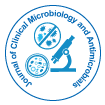

Sidi Mohammed Lahbib SEDDIKI
Report
Some opportunistic pathogenic yeast like Candida spp. is responsible for systemic fungal infections. Indeed, the frequency of invasive candidiasis has been growing steadily in the hospital thereby confirming the results of fungal infectivities of the catheters. Candida glabrata is emerging yeast in hospitals. This specie can contaminate catheters on which is able to form biofilms. These structures are, for other bacterial species, considered as places where they can be protected of antibiotic treatments. Microbial biofilms are formed of a single or mixed species which include a set of bacteria and/or fungi. Several studies have revealed the coexistence of bacterial species and Candida spp. within a biofilm. The aim of this study was to highlight the cohabitation, synergistic or antagonistic effects, between C. glabrata which form the biofilm and Diplococcus spp. which does not have that ability. According to the results, Diplococcus spp. was sensitive to chloramphenicol, but within biofilm of C. glabrata where it lived in cohabitation, it curiously escaped the same antibiotic. Indeed, under some conditions, there may be a synergistic effect among Candida species and bacteria which are resistant to antibiotics in mixed biofilms. These results may partly explain the therapeutic failure in the treatment of systemic infections caused by the in-biofilms cohabitation.